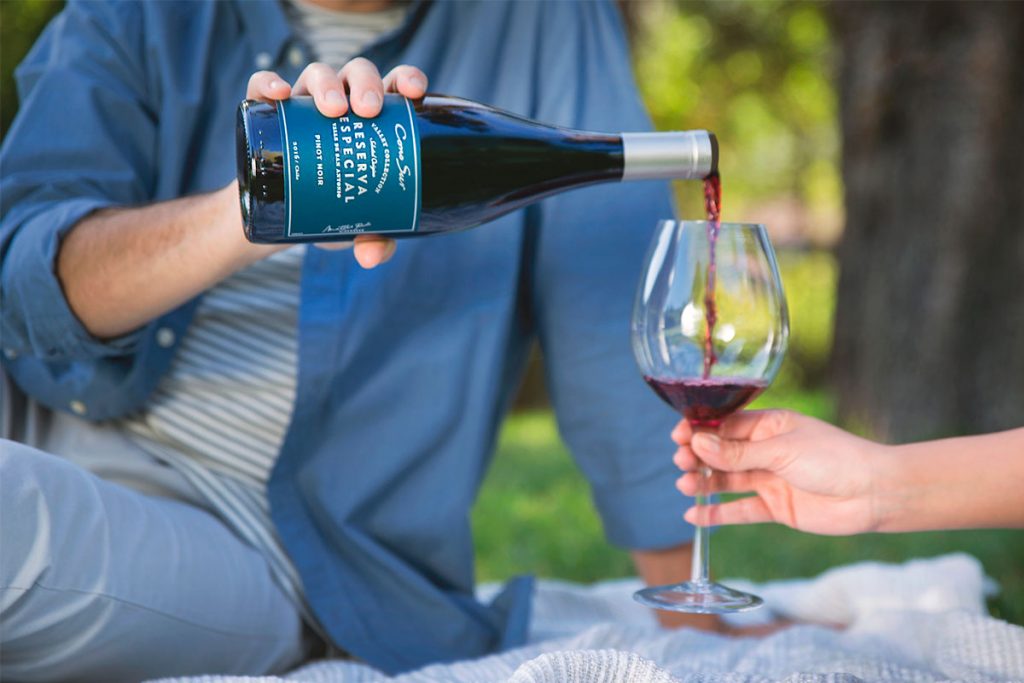Tips for wine tasting
The concept of wine tasting may seem somewhat distant for those who enjoy a glass of red or white wine occasionally, mostly due to the image of wine professionals – sommeliers for example – who taste a wine so objectively. But the truth is that the tasting exercise is something that is done every time you have a glass on hand, since it is just a matter of perception and use of senses.

What elements to consider when tasting?
When tasting a wine three senses are involved: sight, smell and taste. Learning to taste a wine combining these three elements will allow us to further appreciate what we drink, especially if it is a variety from a sustainable vineyard, where the care of every detail creates an unique wine. So, let’s review:
Color
The sight comes into play when we serve the wine in the glass. We must take it by the stem and tilt it againts a white surface at 45 degrees. So we can determine the color of the wine, its hues and brightness and the density of the liquid.
Smell
Don’t swirl the glass just yet! Take a sniff and see what you can detect and how intense is the aroma. Is it a wine of light, medium or pronounced aromatic intensity? Then, swirl the glass and try to notice the different aromas. It can be an interesting game, especially when we compare wines of different varieties.
For example, a Bicicleta Sauvignon Blanc has herbaceous and citric aromas, while in a Bicicleta Pinot Noir is possible to notice the aromas of red fruits, like raspberry and cherry.
Palate
Finally, we get to taste! Take a sip and make the wine move around in your mouth covering everything! This way you can easily detect its different tastes, textures and density. It is full bodied or is it light? Does it feel smooth, or rough and astringent?
After swallowing, try to expel the air through the nose and determine the final aromas of the wine, evaluate its balance and its persistence, in addition to determining its level of sweetness, acidity and tannins.
From theory to practice: how to taste a Pinot Noir from the new world?
After reviewing the basic aspects of wine tasting, we will take this knowledge into practice with Cono Sur’s emblematic variety: Pinot Noir. Our choice: Reserva Especial Pinot Noir.
If we apply these aspects to the Reserva Especial Pinot Noir, we can say that this wine has an intense ruby red color (a typical characteristic of this grape). On the nose, aromas of red fruits and wild berries are identified, intermingled with spices. Finally, on the palate, we find a soft and elegant wine, with a refined concentration and good acidity.
As we have seen, to taste a wine we must have our senses wide awake, in addition to being an interesting way to appreciate even more your favorite variety. Learning to do it will allow you to see a red or white wine from another perspective.